Today I decided to write about something that doesn’t concern books, exhibitions, or cool product design. I decided I’ll share some images and thoughts from a foreign animated film I recently watched.
Long Way North (or Tout en haut du monde meaning ‘At the very top of the world’) is an animated co-production between French and Danish studios made in 2015. The director is Rémi Chayé. Chayé kept the film’s budget modest; instead of flexing animator skills through unnecessary details and constant movement, the film is decisive with its visual information and contains more moving holds (quiet scenes of slight movement). These choices and sensibilities make it refreshing for me to watch.

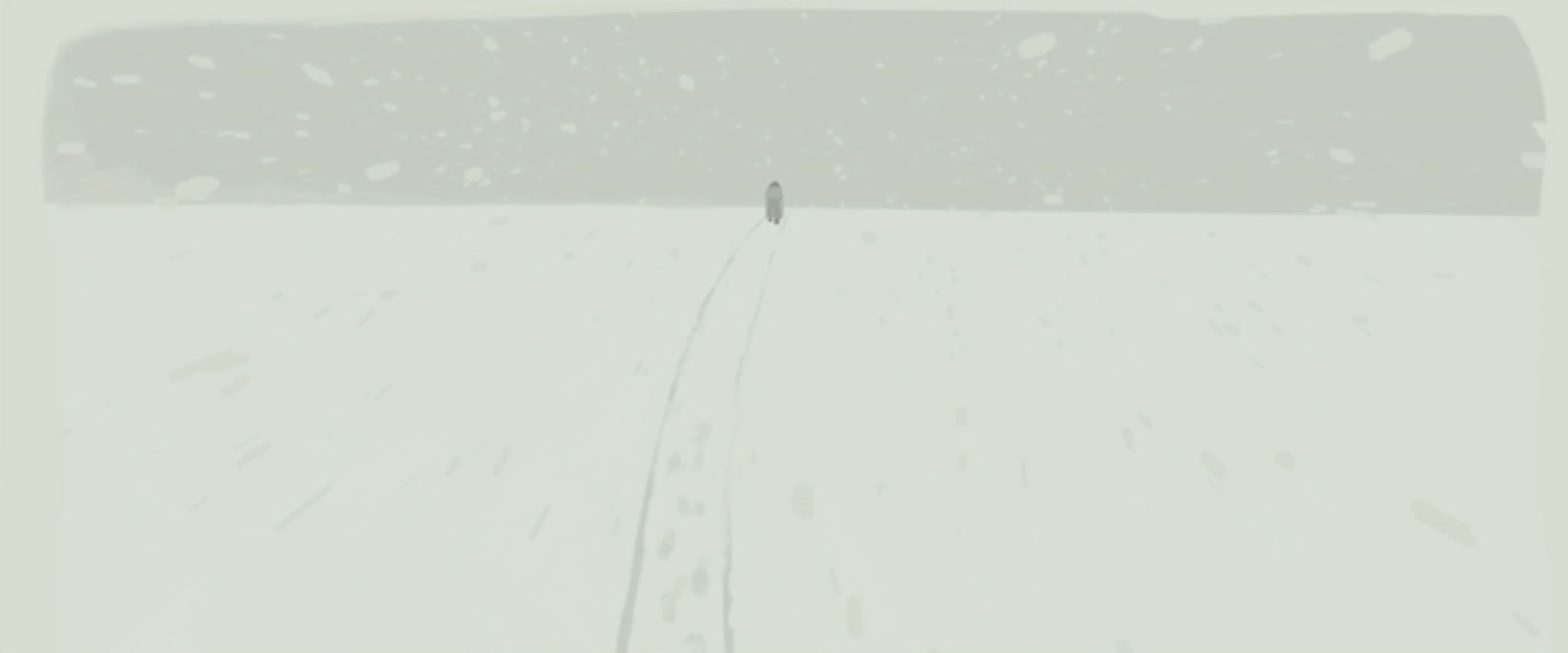
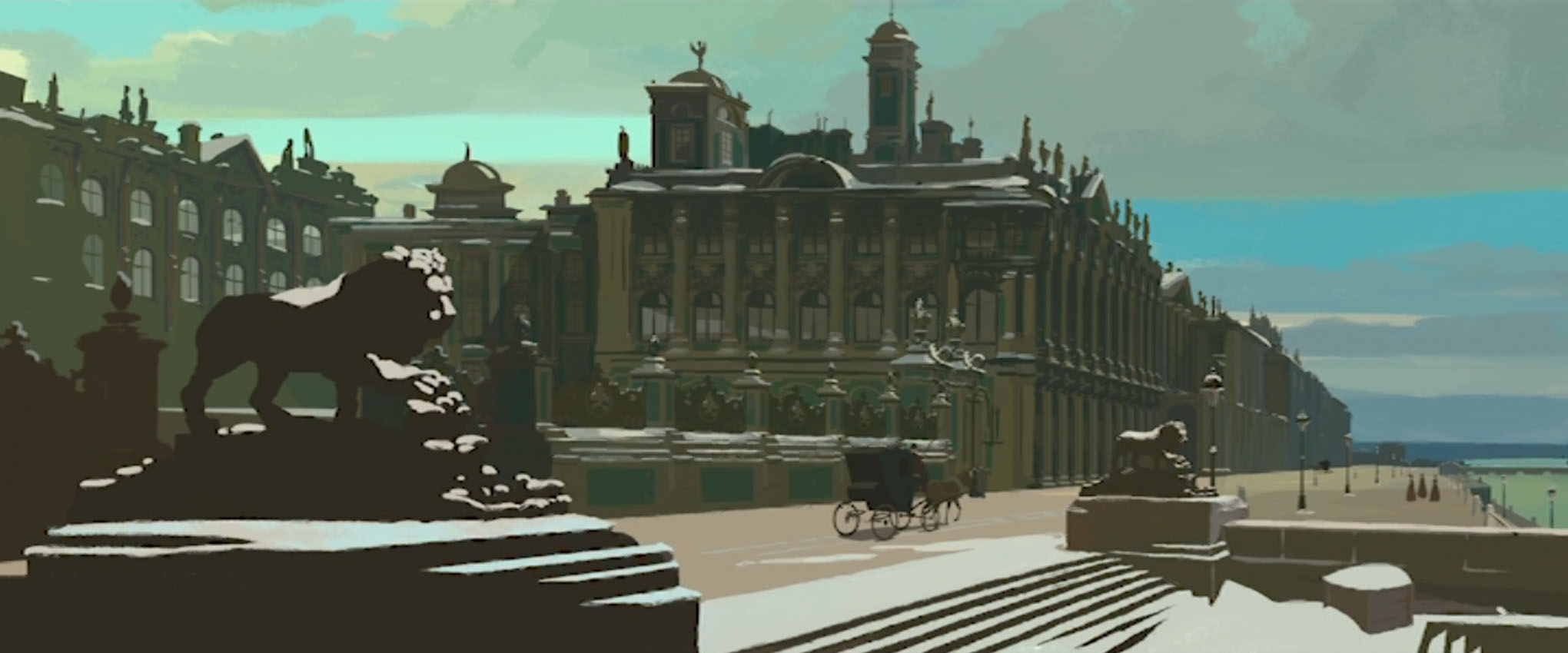
I appreciate an animated feature that tells an offbeat narrative, or takes on a visual identity that’s unique to itself, as a respite from the over-played and safe stories and looks of America’s animated blockbusters. Seeking out and choosing to support smaller films like this means we can see more variation.
Here is a trailer with English subtitles:
I would recommend watching the film in its original language audio (to enjoy the French voice actors) with English subtitles, if you can. The region 2 DVD I found comes with both French and English audio and English subtitles.
I summarise the story as thus, but be warned as it contains spoilers:
In the late 19th century, the Tsar of Russia has funded the construction of a great icebreaker, the Davaï, and its voyage to the North Pole. The crew is lead by the explorer Oloukine, grandfather to a young aristocratic girl named Sasha. The Davaï leaves with much fanfare, but years pass, and the Davaï and the exploration team fail to return. A reward for the ship is offered by the Tsar, but all search parties failed to find the ship.
15-year-old Sasha still believes that the Davaï, her grandfather, and his crew will return. On the night of her debutante ball, Sasha sneaks into the newly built library wing of her family home, dedicated to Oloukine and filled with his belongings. She is searching for a pair of earrings her grandfather brought back for her years ago, and finds her grandfather’s exploration route through the Artic. During the ball she discloses her findings to her family and guests – that the Davaï’s search parties took the wrong routes – but the findings are brushed off as fantasy, and Sacha’s claims do nothing but strain her family’s relationship with prince Tomsky whom sees Oloukine’s efforts as a waste of resources.
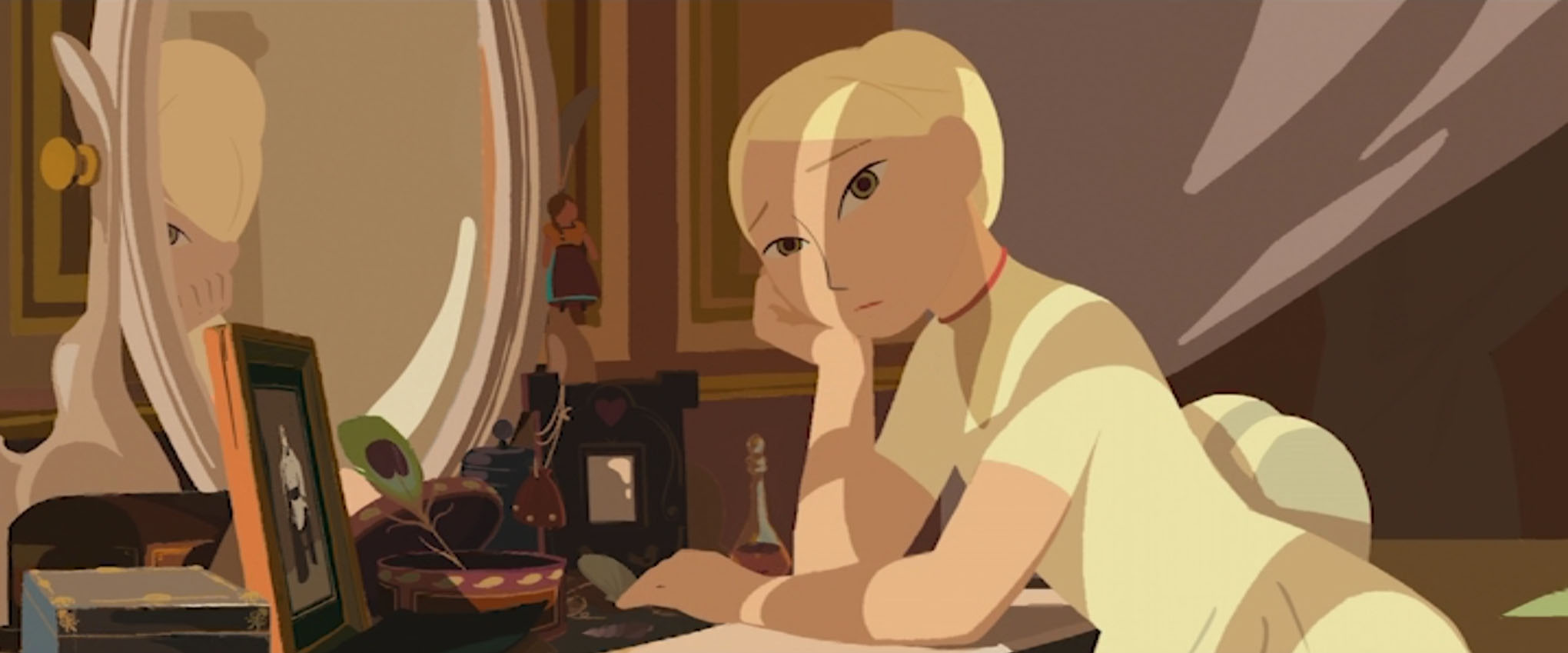
Sasha runs away from home at night, determined, and carrying what little comfort she can. She travels to the coast in search of an ice-breaking ship, and finds one named the Norge. Sasha bargains with the crew mate Larson, believing he is the captain of the ship. She offers her earrings in return for passage to the Artic. The Norge’s captain Lund grants Sasha aboard his ship to seek out the Davaï, if only because she had already been promised passage by second mate Larson.
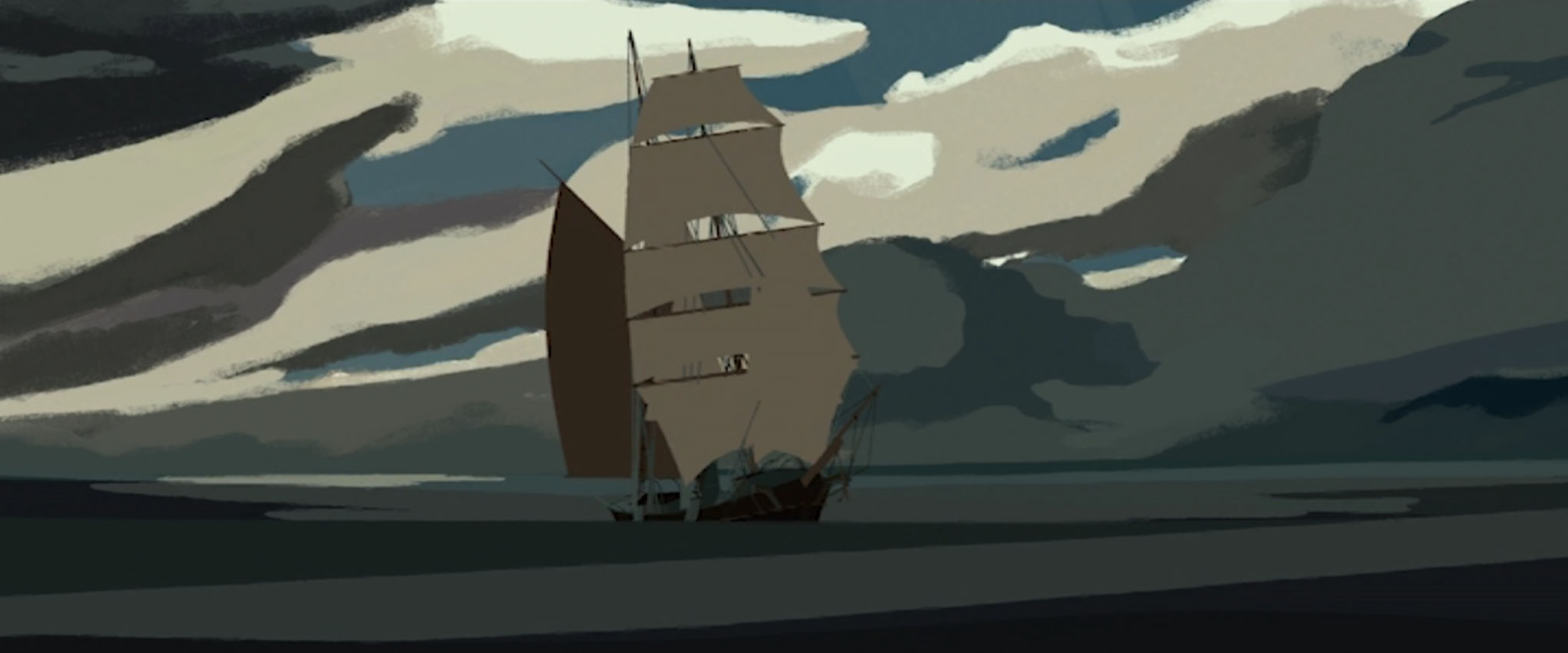
The relationship between the crew and Sasha is tentative at first, and gradually warms up to an amicable alliance as they cross the water to the Artic. But as soon as the Norge is met with the harsh environment, things take a turn for the worst. The Norge is sunk by an avalanche, and Lund is injured due to Larson’s inadequate performance. While the tools and supplies saved from the wreck can sustain the crew for a short while, the men begin to turn on each other, and blame Sasha for their predicament.
With even the young deckhand Katch turned against Sasha, she leaves camp and is followed by one of the ship’s huskies. Led by the dog, Sasha finds her grandfather’s frozen body and his logbook, in hand. It reveals the last actions of the Davaï’s crew, and the coordinates to the ship. Sasha returns to camp after being found by Katch. Lund’s crew free the landlocked Davaï using their remaining dynamite, and use the vessel to return to ST. Petersburg.
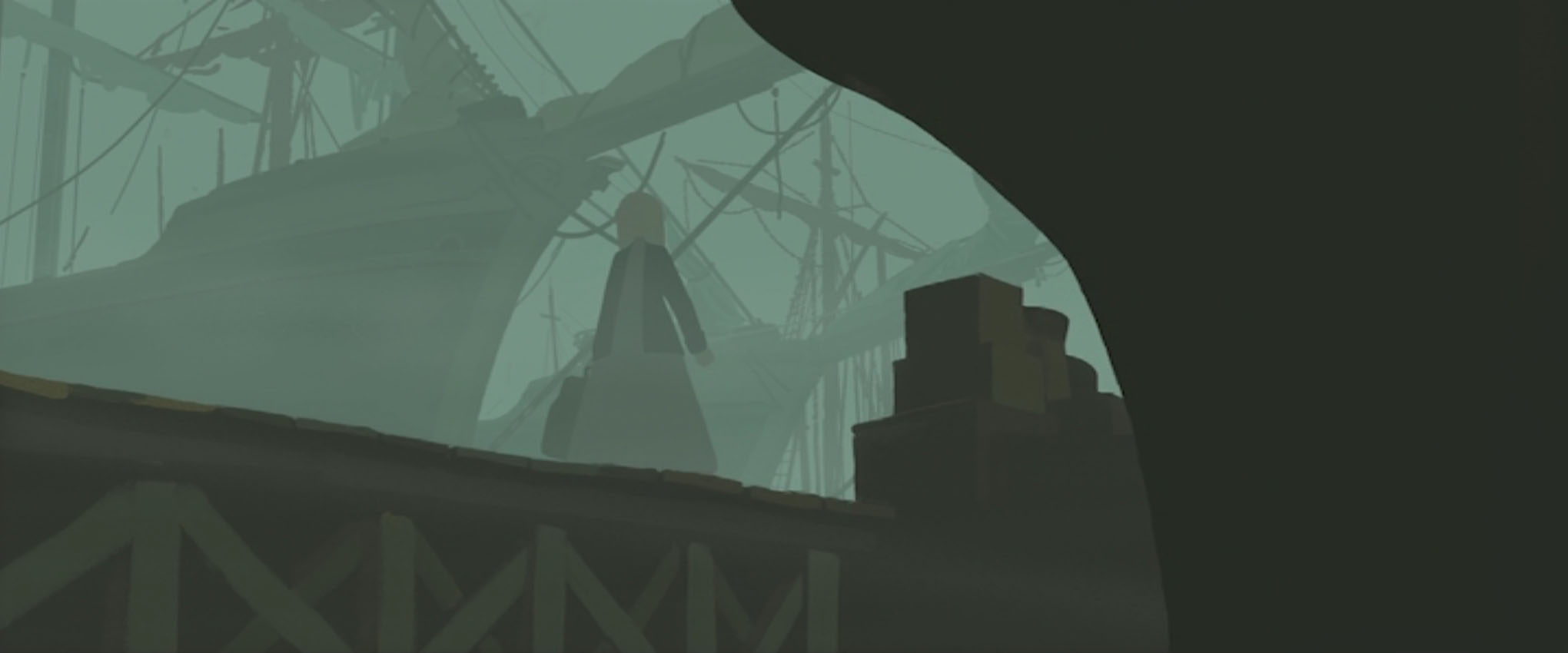
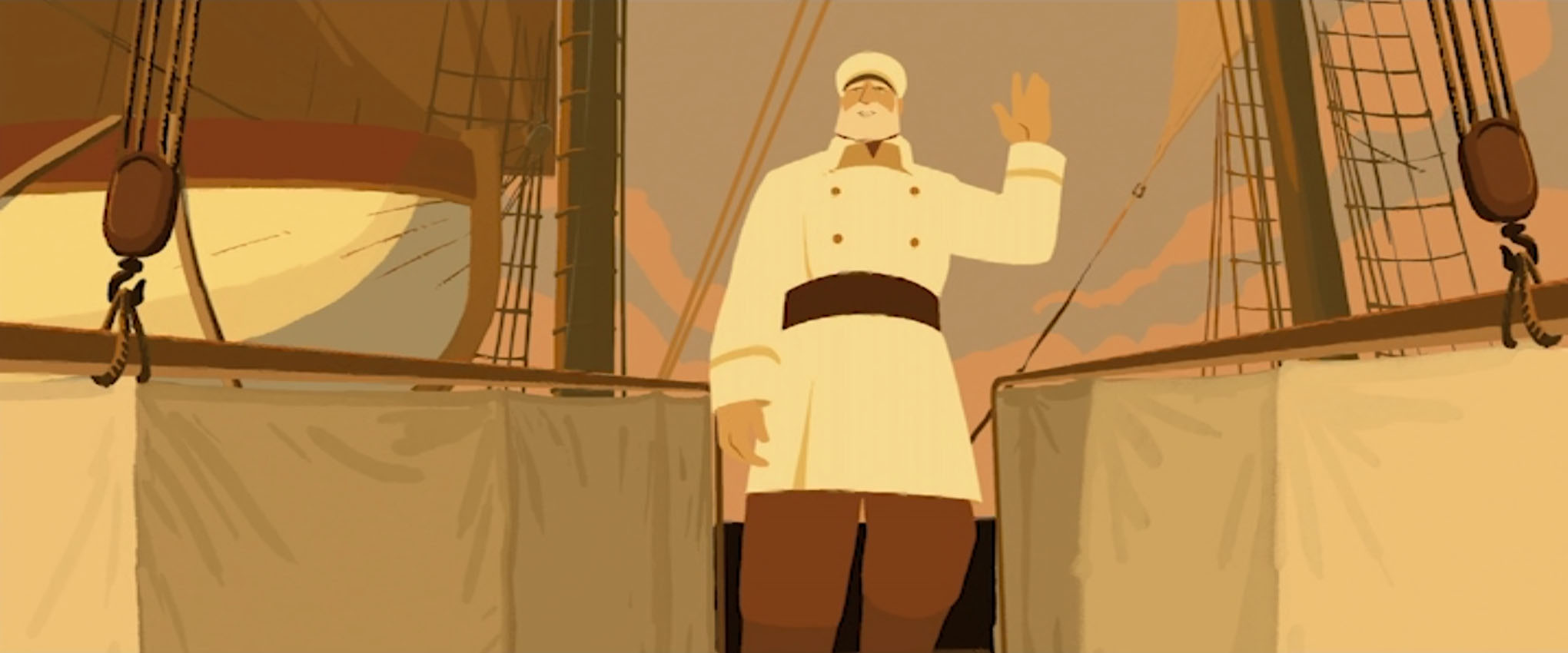
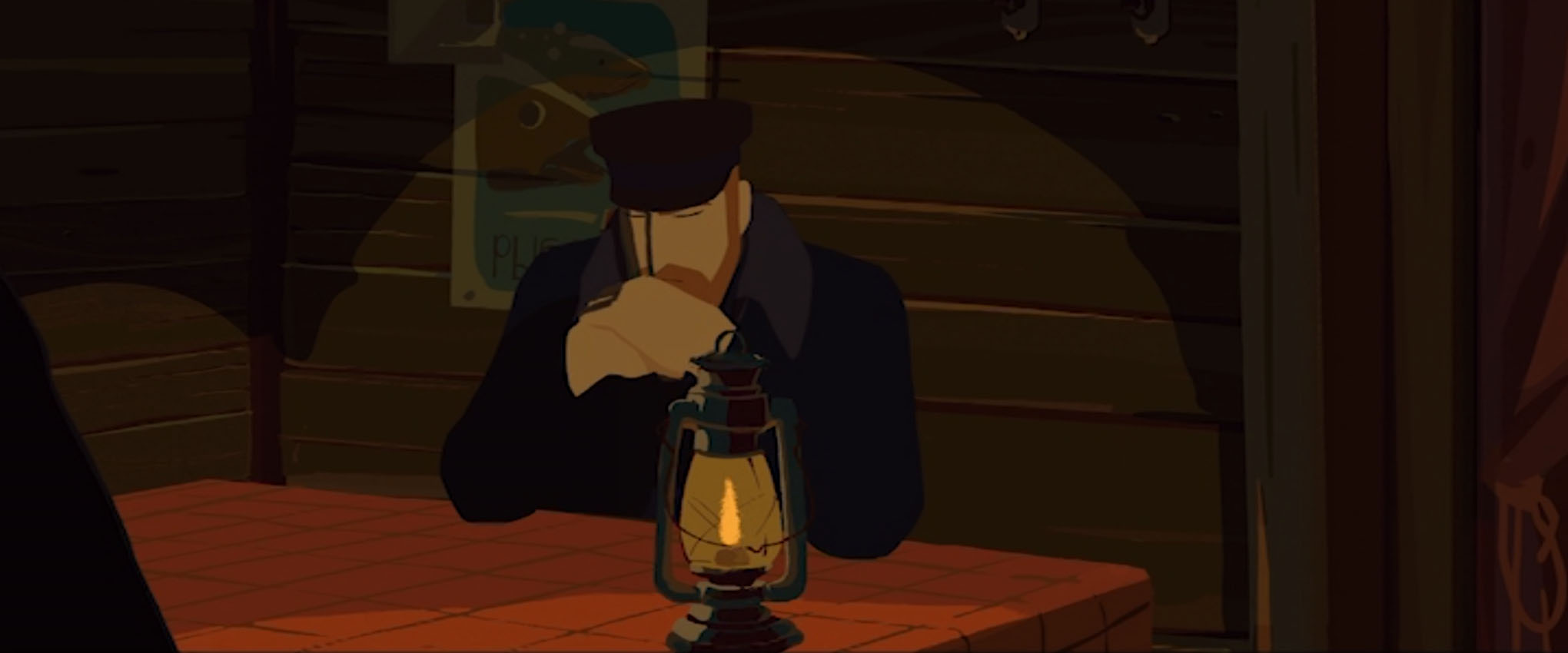
The widescreen (2.35:1) film makes great use of the dimensions for both its vast urban and country environments, and busy interior set designs.
Whether a scene takes place in the early morning, day, dusk, or late at night, the choice of colours closely imitate the feeling of real naturalistic lighting. As the film progresses, the warmer tones lessen in frequency to match the atmosphere and settings.
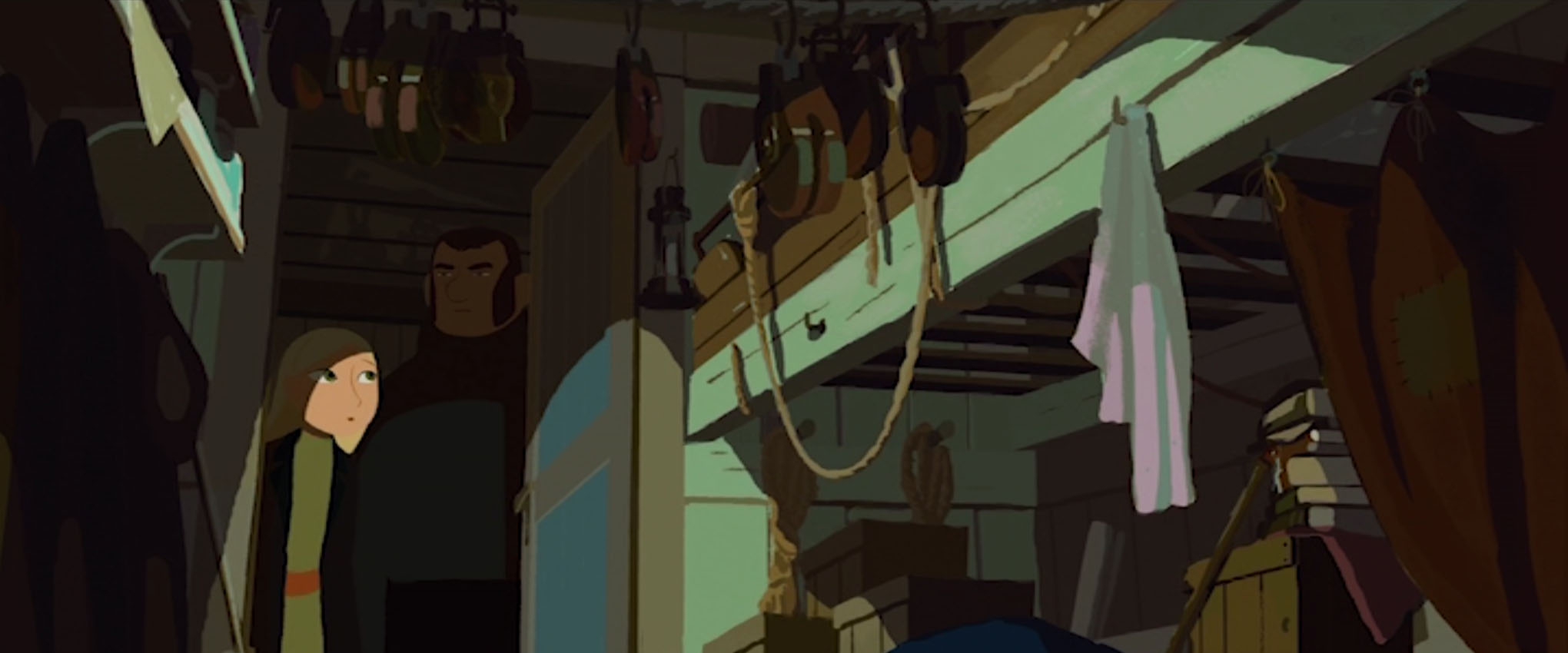
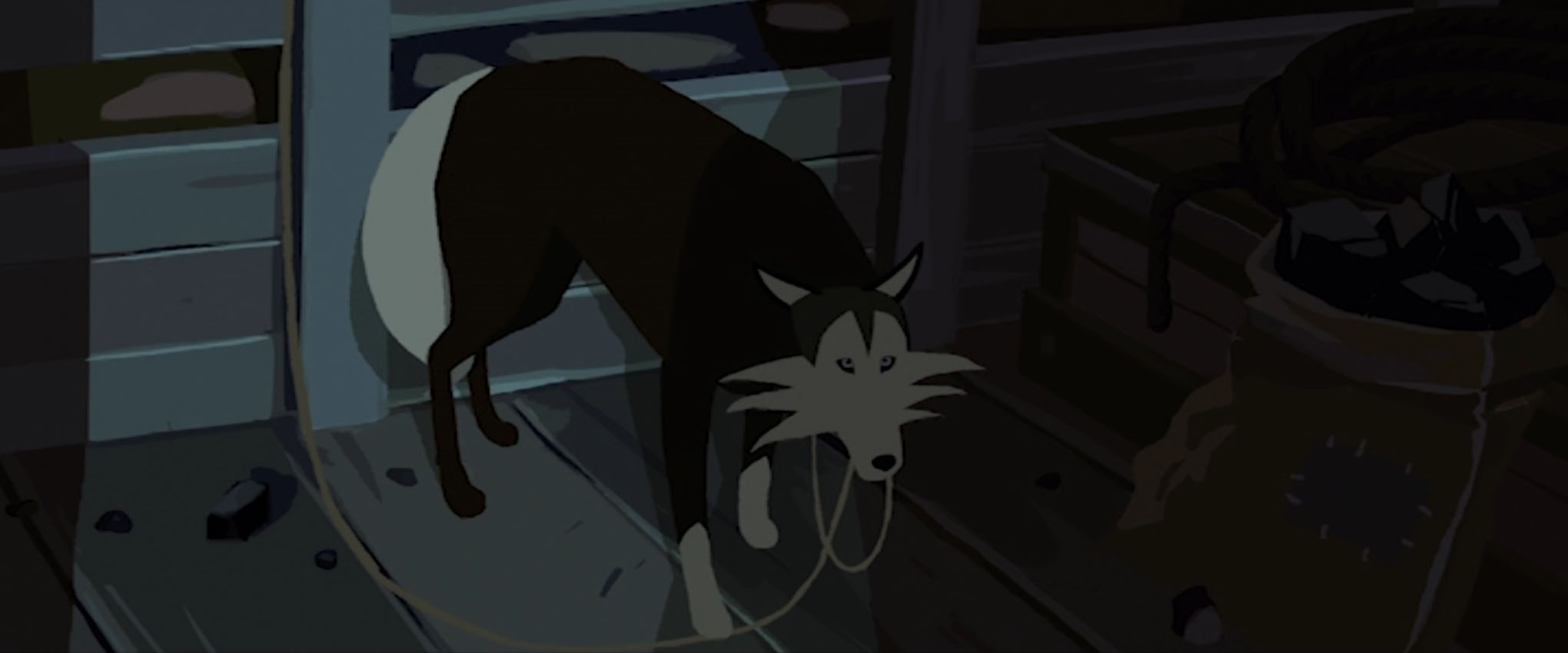
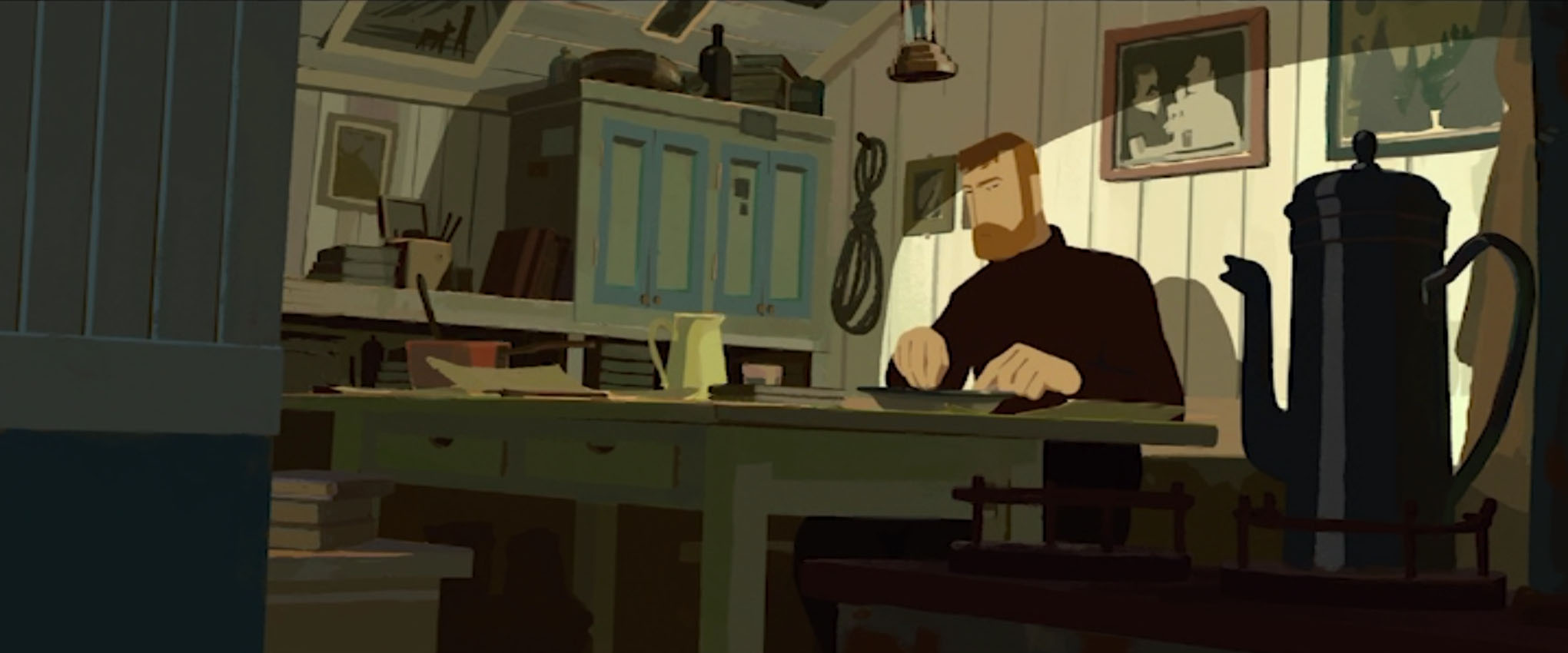
Even though the people in the film are heavily stylised – as are the spaces they inhabit – they still feel and act human. This is down to the writing, the dialogue, and the animation. While Sacha’s motivation to find the Davaï is the driving force of the feature, captain Lund’s brother and second mate Larson clearly has something to prove. When characters are met with difficult choices, the darker side of human nature shows itself. I don’t have any clips of character interactions to share, the character acting is well-done.
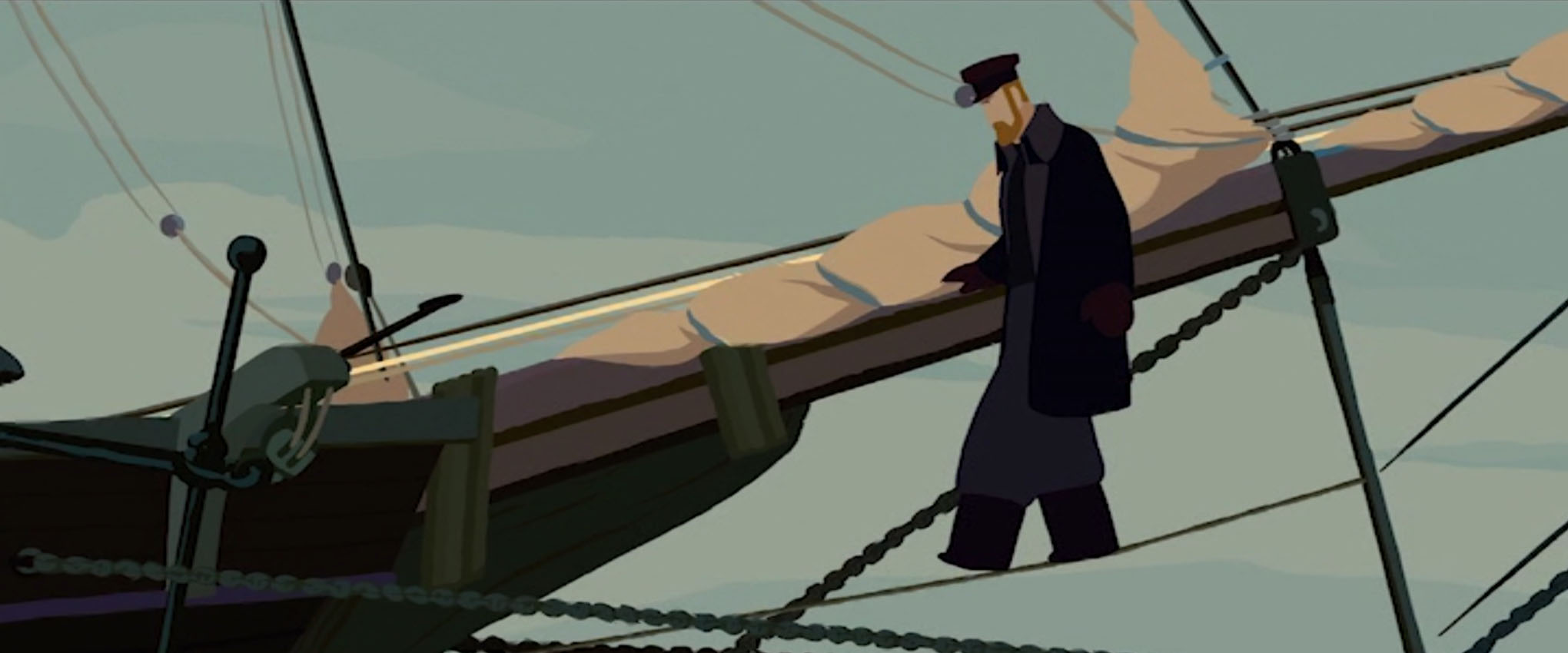
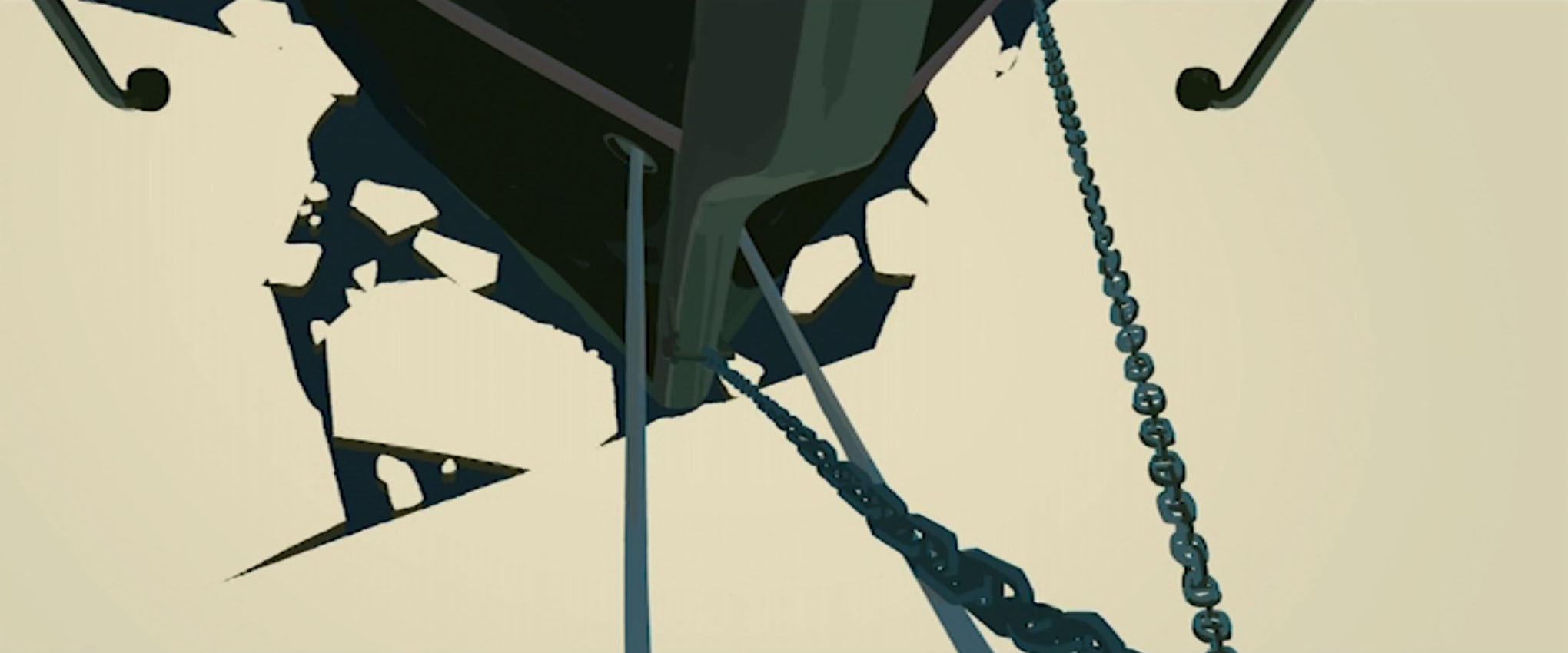
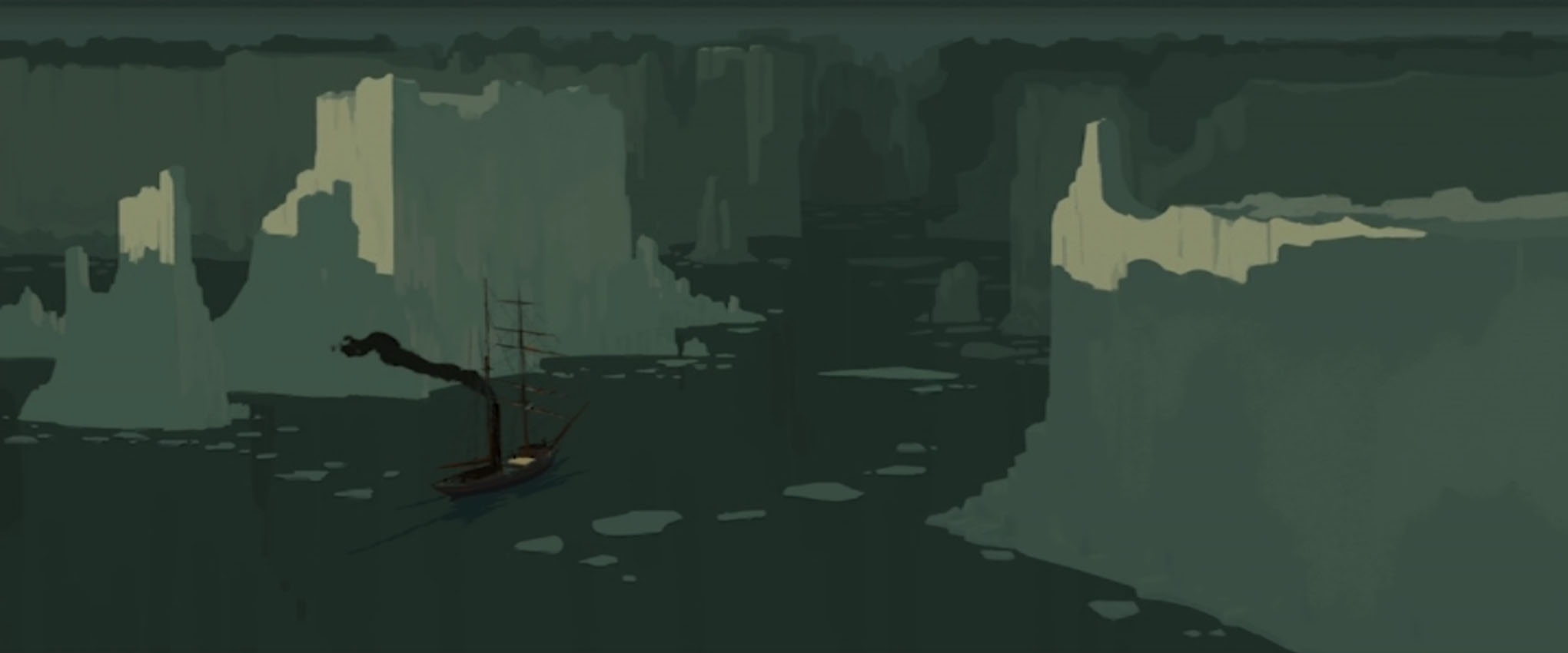
While on-board the ship, the ‘camera’ moves about to emulate the motion of the ocean waves. A lot of the compositions are tightly executed.
The sound design of the film is great, too. (The DVD I have came with surround sound.) The feature is mature enough to let silence and noise take their turns to speak in place of the characters. Like any form of design, if the sound department does a good job, it’s often uncredited, but if the sound design is bad, we’re more likely to be upset and complain.
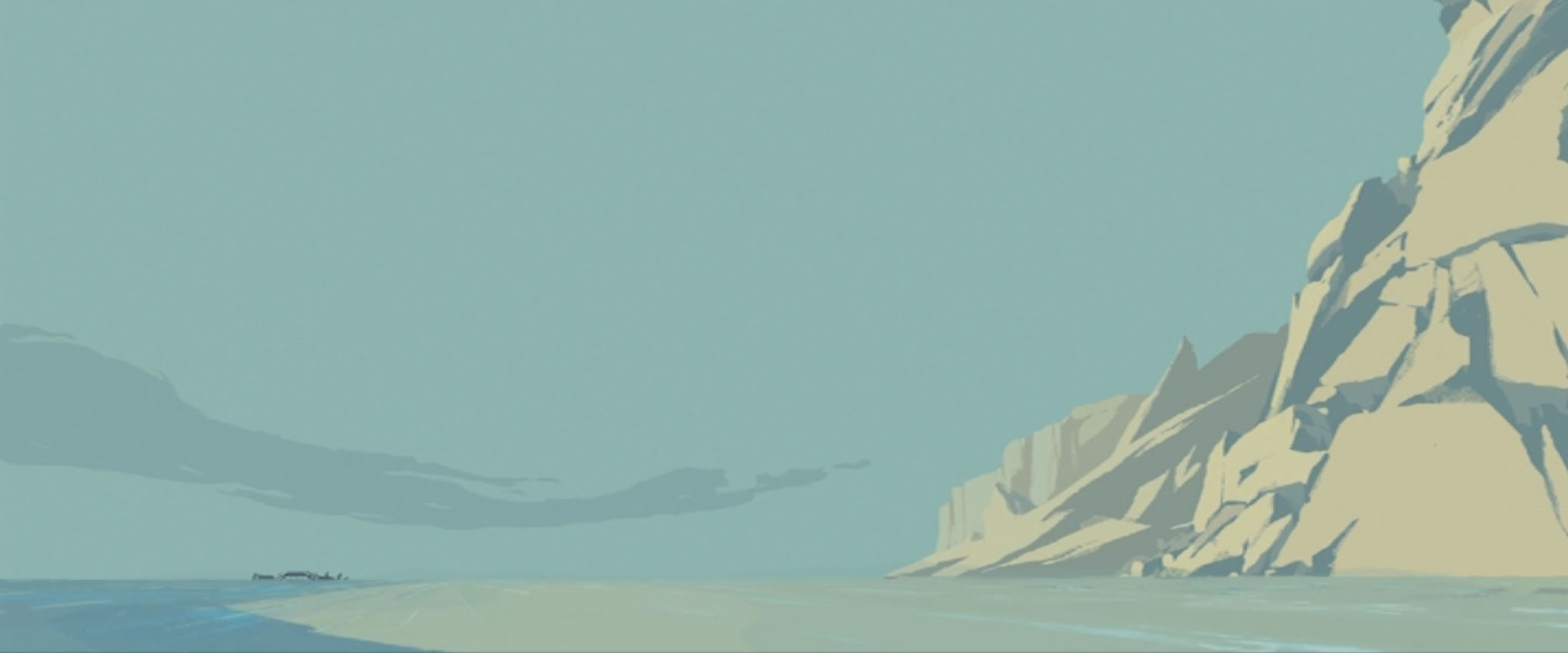
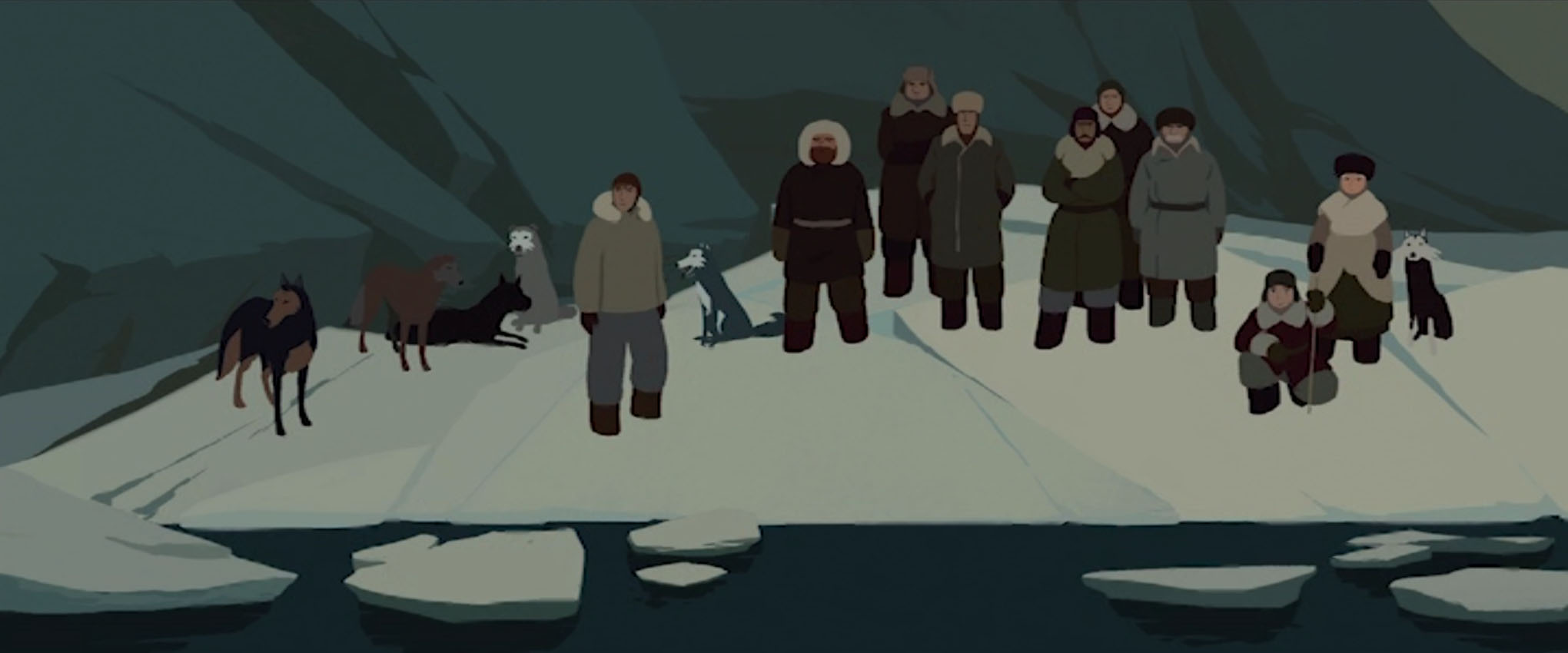
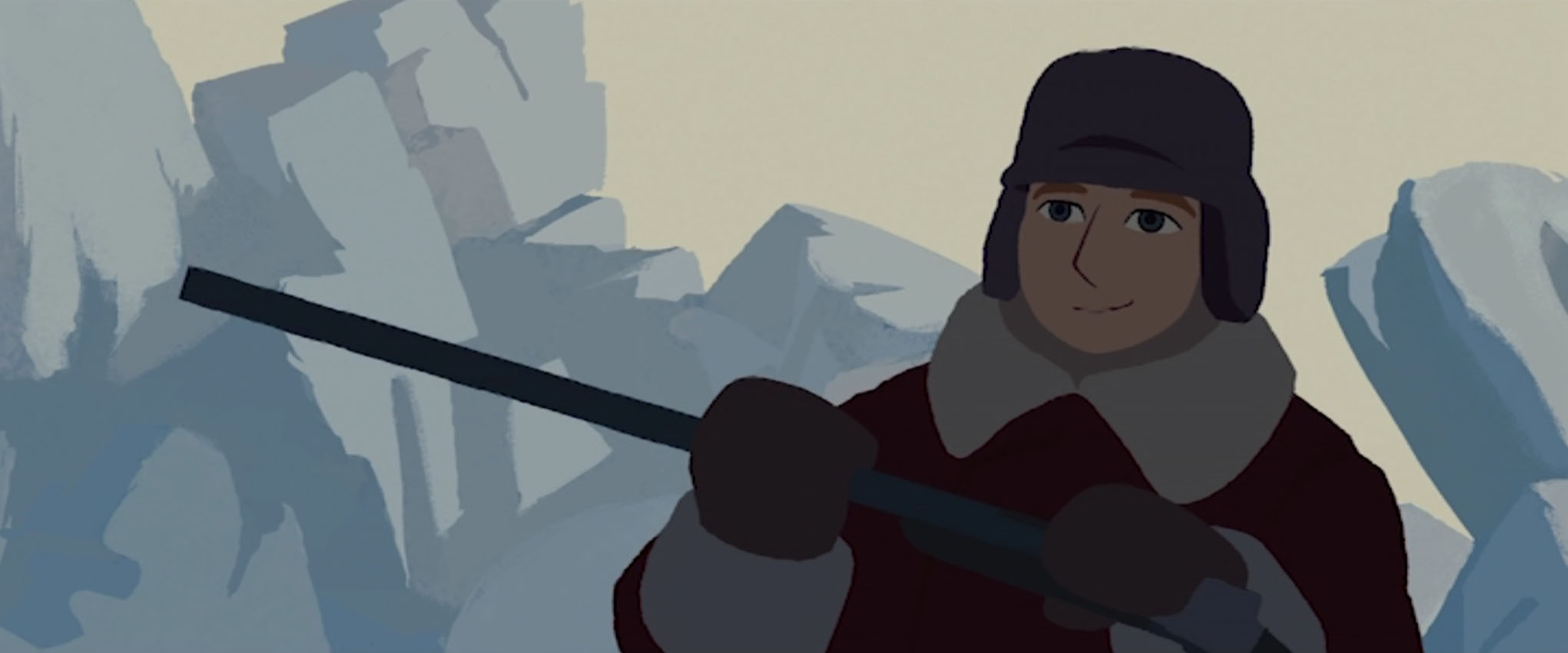
Hah. I wan’t going to include as many images as I did in this write up, but I took many screen grabs as I watched the movie again, still as impressed as my first viewing of the arrangement of the figures and backgrounds – and the very confident use of negative space.
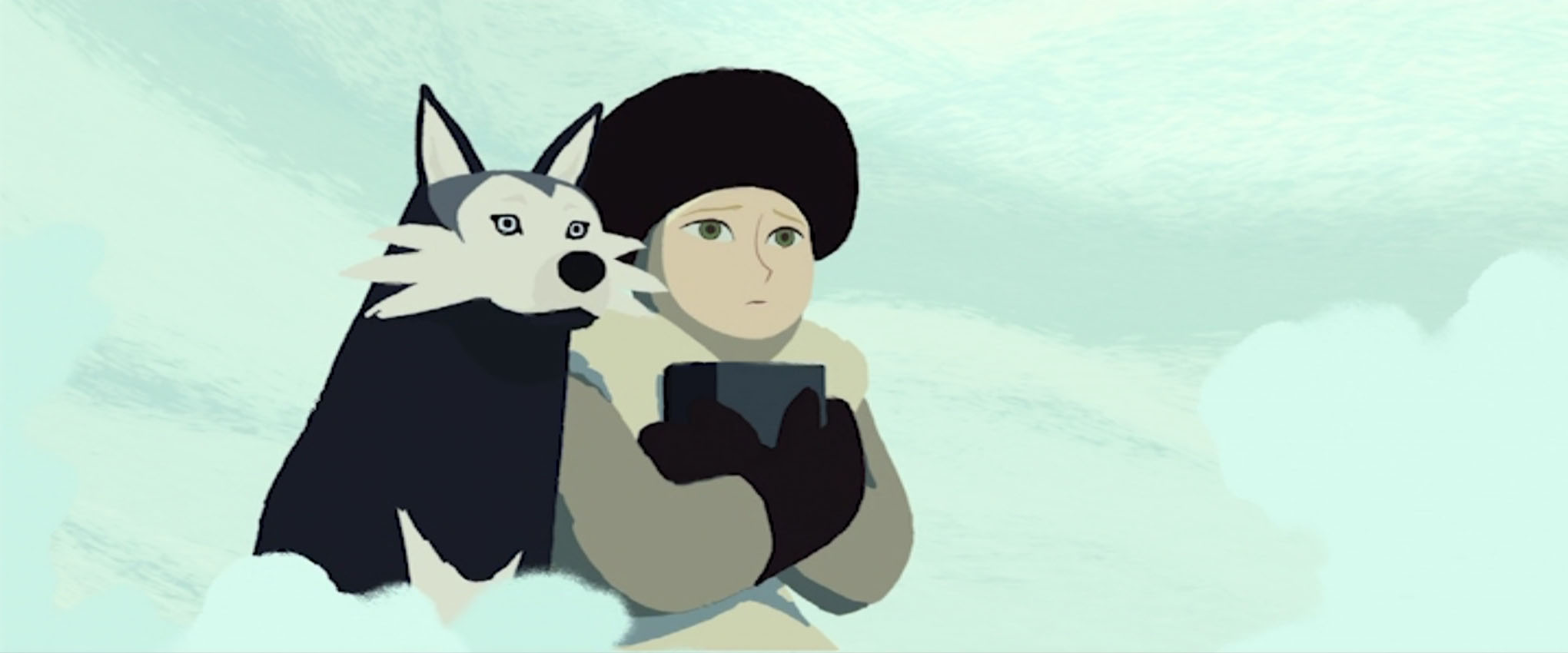
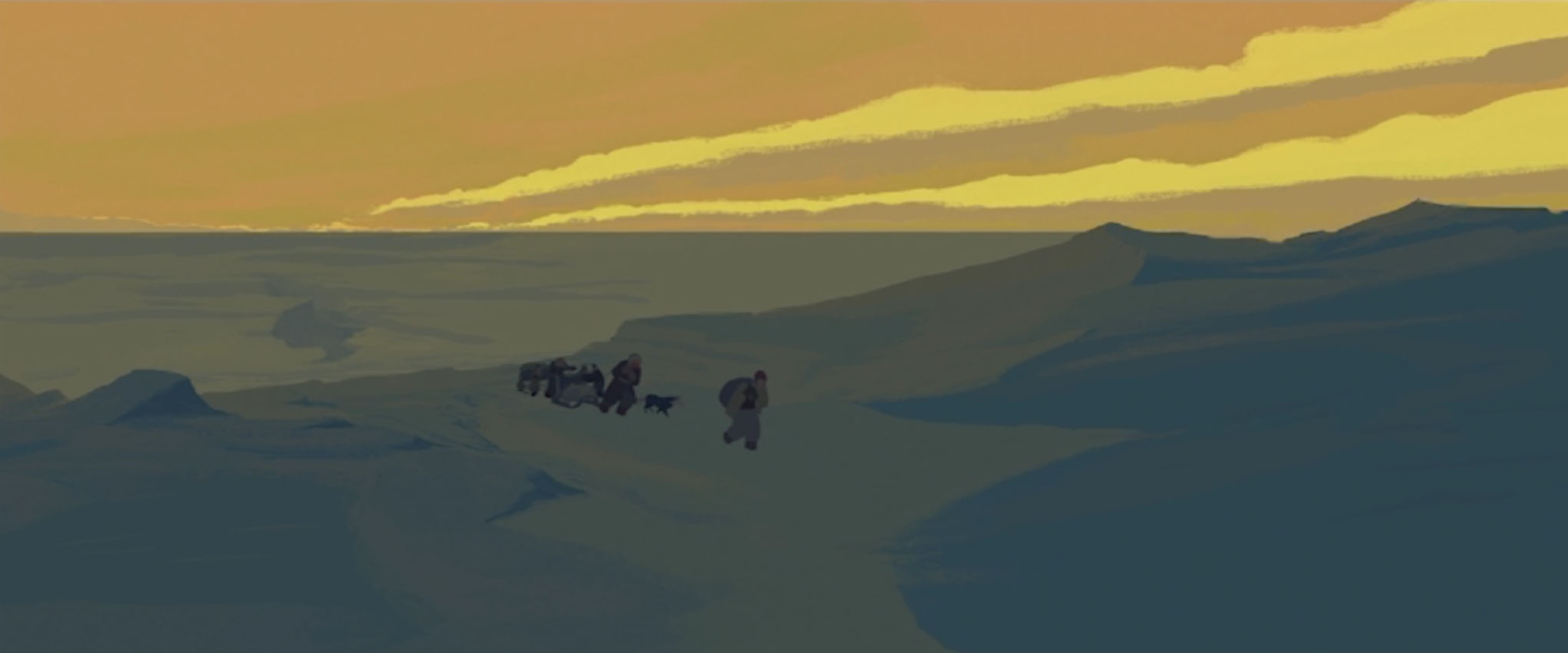

I haven’t done much in the way of digital painting lately, and looking at this film it makes me think “Ah! I need to step up my game!” and practice with more adventurous palettes next time I make studies. Rémi Chayé cited Russian realist painter Ilya Repin as a source of inspiration behind the art direction. It is also worth noting that while it’s conventional to illustrate or animate figures and objects with outlines, the film does away with them, not only giving the film a unique appearance, but it is also closer to realist paintings and a real perception of our world.
I hope that if you have not yet seen the film, dear reader, that you may feel inclined to seek it out now. It’s worth a watch for the visuals alone! I admit that I enjoyed writing up thoughts on this film, and would like to share other lesser-known (and less accessible) animated features on my blog.
Pingback: Animation – “The Little Prince and the Eight-Headed Dragon” – DESIGN WORKS